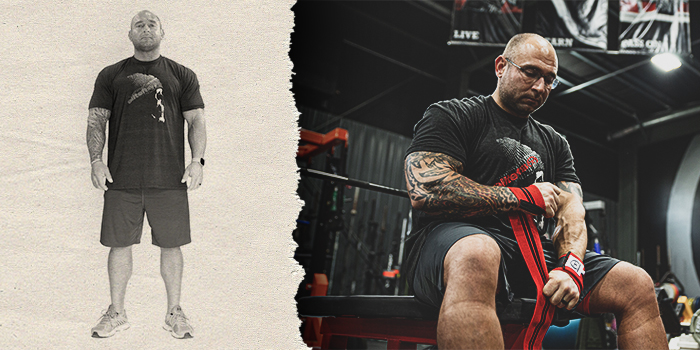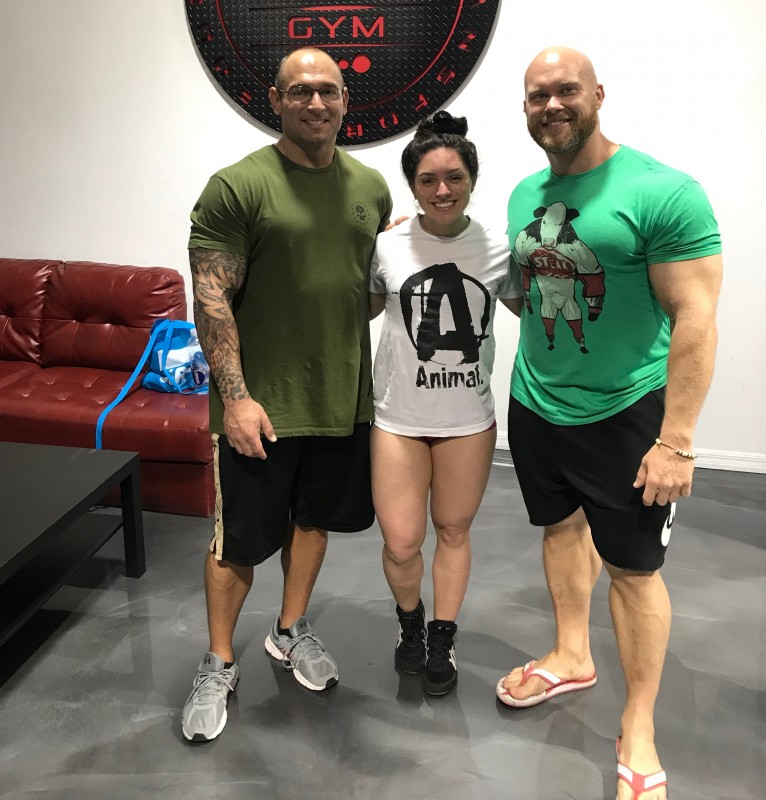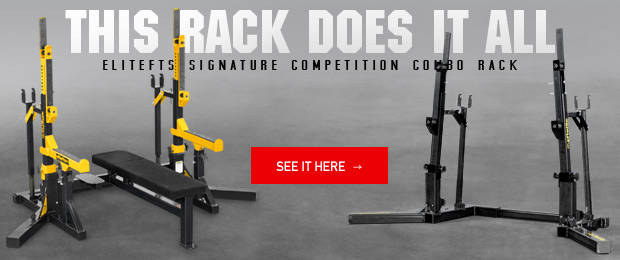
Recently I had the privilege of spending some time down in Tampa Bay, Florida, at MI40 gym with Ben Pakulski. The first week I was down there, I had a few conversations with him but spent a lot of time checking the area out for a possible grad school.
The second time, I spent five days with him at one of his muscle camps. The amount of thought he puts into his approach to training is second to none, and also, there’s the mindset behind it all. I learned a ton that week, and I wanted to share with you what exactly a powerlifter can learn from an IFBB Pro.
RECENT: Phases of Performance Nutrition
As strength athletes, we care only about lifting the weight from Point A to Point B, but from a bodybuilding perspective, that is dead wrong, but how does that translate to powerlifting? The idea here is to challenge the muscle and not just focus on completing reps and sets.
To a powerlifter, this is extremely valuable because I see so many lifters trying to finish a set because that’s what it says on paper. However, the execution is very sub-par. This can lead to a path of injury and inconsistency in movement patterns. Learning the intent of the exercise and what muscle or muscles it is supposed to work is important because that will tell you when to stop the set.
Once you stop feeling the muscle working that is supposed to be working, then stop. This is done with the context of trying to build muscle, so you need to focus on the internal stimulus and not on the external stimulus. This means this technique will not be performed on your main movements.

When the external stimulus will allow you to lift more weights, just be very mindful of technique and not chasing reps. Take this internal approach into your accessories, and really focus on that mind-muscle connection. Don’t reach beyond that: once that connection is lost, that set is done.
The next thing is that your body down-regulates the ability to fully contract when there is instability. We all know that stability is king when it comes to lifting a lot of weight and doing it in a manner that won’t cripple us. But what if our goal was off-season hypertrophy? If we want to put on as much muscle as possible, we may want to focus a lot of our exercises on machines that take away the stability aspect of things so that we can really push the muscle to its ultimate limit. Machines like the leg press, hack squat, Smith Machine, and back machines bring stability to the movement due to the fact that they are in fixed positions.
Sure, we can push a set of squats to failure, but by the end of that set, our backs are usually blown out, and we are useless the rest of the day. Now, if we focus that same intent and intensity on a hack squat, where we can focus the load on the quads, we will leave that set not being able to walk. We want to push muscular failure, not exercise failure. Now, which one do you think would be more valuable for building massive legs? Keep in mind that this is the off-season and that the goal is size.
The key to muscle building is maximal tension over variable time. Maximal tension means that the muscle being trained needs to fatigue first. This is done by mastering execution. Things to consider when mastering execution are the setup, the motor path of motion, stability, and maintaining maximal tension over time. These will be new skills to many, and the best ways to learn new skills are through higher frequency, no cheat reps, and by looking for 100 percent execution of each rep. A great way to do this is to choose exercises that allow you to focus on effort without worry and to challenge your body in a way that is novel to you.
WATCH: Why You Should Check Out Yessica Martinez's Training Log
One of the bigger takeaways I had from Ben was to train in rep ranges or modalities that I am not used to. He took me through a hack squat that was three sets of 20 reps, and after the first set of 20, I could barely get 14, and then barely got six. This was not because I was gassed, but it was because my muscles had never gone there before.
Why is this important to a strength athlete? Because taking your body to areas it is not comfortable with or used to going will build resilience and stamina, which will significantly reduce your risk of injury.
The perfect execution of each exercise is key. This means that we are not chasing reps or sets but rather feel as I expressed earlier. I also posted a recent study in my training log about how taking things through a partial range of motion can build more hypertrophy than a full range, and that is something Ben talked about.
Once a set gets hard, instead of compromising your technique to complete the lift, you just go to partials with the same perfect execution to get more out of it. He said over and over again that to quantify a lift, you must qualify it.
We do this with our main lifts as powerlifters. We work on building perfect reps one on top of the other to get that perfect pattern down, but when it comes to accessories, we neglect them completely. For us to get the most out of our sessions, we need to chase ways in which to perfectly execute the lift. The better you get at this, the fewer actual sets you will need to get the same stimulus. Therefore, you won’t be collecting as much junk volume.
These are just a few of the things I learned from Ben during our time in Tampa. He truly changed the way I looked at training and shifted my paradigm regarding what it means to train correctly.











1 Comment